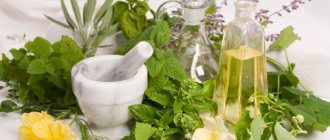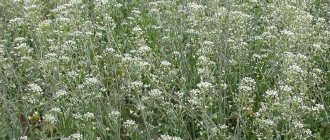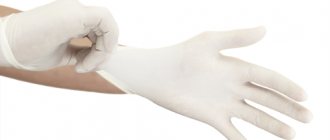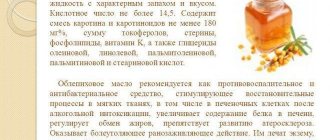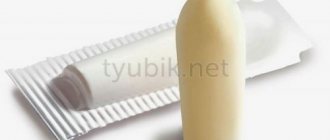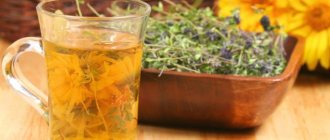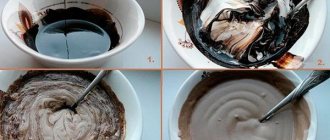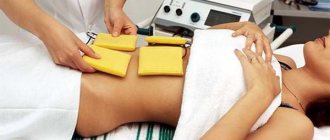Why is sage used for infertility?
Sage is believed to be a natural phytoestrogen. This plant contains a hormone-like substance, which in its structure resembles the female sex hormone estrogen.
The healing properties for women with infertility are associated precisely with the presence of a large amount of phytoestrogens in this plant. If there is a lack of the latter in the body, a woman may have difficulty conceiving.
To normalize the menstrual cycle, pregnancy, and normal functioning of the body, doctors always recommend replacement therapy. Often it is started with herbal medicines, and only if they are ineffective, treatment with hormones is continued.
Sage for infertility helps increase the amount of estrogen in a woman’s body. However, this medicinal plant can only be used as prescribed by a doctor.
https://youtu.be/PDiqYbhBsqI
Sage for conception: how to take it for women
There are several application options:
- decoction;
- infusion;
- poultices;
- oil, including essential oil;
- in rare cases, juice.
Any form of medicinal use of this herb helps to improve the main indicators of women's health: a stable menstrual cycle, the body's readiness for the possible, optimal condition of the reproductive organs for pregnancy and childbirth.
Infusion
Taking the plant to increase the chances of getting pregnant is justified in cases where studies conducted by a doctor show a reduced level of female hormones. Sage infusion is a more concentrated drink than decoction, and therefore is drunk less often and in smaller portions. The most common dosage regimen is a tablespoon 2 times a day, an hour after meals. However, options for individual calculation of the daily dose are possible, taking into account the test results.
Recipes to improve ovulation
To produce hormones necessary for pregnancy (follicle-stimulating, luteinizing, etc.), sage can be used in two ways:
- Taking a decoction or infusion orally (brewed according to instructions and consumed 3-4 times during the day according to the scheme).
- Massage with essential oil (rubbing into the skin of the lower abdomen).
The use of a medicinal plant is limited to the first half of the menstrual cycle, when menstruation itself has already ended.
Douching to conceive a baby
During the douching procedure, a decoction is used, less often an infusion (low concentration). At the pregnancy planning stage, it can help cope with inflammation due to thrush, infections and damage to the vaginal mucosa. In this case, douching can be replaced with sitz baths.
If the medicinal plant is intended to eliminate a woman’s hormonal problems that affect conception, then douching should be done immediately before.
The optimal temperature of sage decoction for douching is 38°
Sage leaves: how to take correctly
The best option for purchasing a plant is at a pharmacy or specialty store.
Sage can be either a loose collection or powder, or bagged tea. A quality certificate provided by the point of sale will guarantee that the harvest is correctly collected and dried.
Instructions for use usually suggest daily brewing and three times a day, but the best way is to take it according to the regimen prescribed by your doctor. The specialist will take into account the individual characteristics of the body and calculate the optimal dose of leaves.
Does it help to get pregnant or not after 40 years?
Taking sage by women over the age of 40 helps support the endocrine system and delay pregnancy. Planning pregnancy is not limited only to medicinal herbs, and therefore requires consultation with a doctor. Only a specialist can approve the use of this herb as a therapy to support the production of sex hormones. Rich in phytoestrogens, sage can significantly improve the functioning of a woman’s genitourinary system.
Contraindications
Before taking sage for infertility, be sure to familiarize yourself with the contraindications to the use of this plant.
Allergic reactions
A clear contraindication is an allergy to sage. However, in people who have never used this plant before, but are susceptible to seasonal hay fever and other types of allergic reactions, it is necessary to use it with caution and only after consulting a doctor. The use of an unfamiliar herbal component may lead to the development of an allergic reaction.
Children under 18 years old
Children are also strictly prohibited from consuming sage. A child’s body that is not fully formed may not correctly perceive the active substances of sage. This can lead to serious pathologies.
Pregnancy
Regardless of the period. Very often, people are treated for infertility and at the same time trying to get pregnant. If drug therapy is supplemented by the use of sage, this should not be done. After all, implantation of the embryo into the uterus occurs even before the delay appears in the woman. She cannot diagnose conception. If a woman takes sage in any form, this can lead to impaired fetal development. Therefore, when using sage, attempts to become pregnant should be postponed.
Decreased kidney function
Treatment of infertility with sage can only be practiced when normal kidney function is confirmed. To do this, you need to visit a therapist, undergo an ultrasound examination and find out your blood creatinine level.
How to take sage for infertility?
There are many years of recipes for using sage for infertility.
Sage tea
One of the most effective methods of taking sage is to brew it as a tea. For this you will need dry inflorescences, leaves and stems. They are poured with boiling water, allowed to brew for 5-10 minutes and drunk like tea. The volume of such a drink should not exceed 100 ml. You should drink it 3 times a day. There is no need to take tea 2-3 hours before bedtime.
Sage decoction
Dry sage leaves are poured with boiling water and simmered over low heat for 7 minutes. The broth is allowed to cool to room temperature and taken a tablespoon three times a day, 20 minutes before meals.
Sage tincture
To prepare the infusion, pour boiling water over the dry inflorescences and leaves of the plant. The resulting mixture should be covered with a lid. Infuse sage in an opaque container or in a dark place for 3-4 hours. You don’t have to worry about how to drink this infusion - it’s very simple - a teaspoon, 5 times a day. The infusion contains a large amount of concentrated substances. Exceeding the dosage can harm the body.
Douching
Douching for uterine endometriosis can be quite effective if this procedure is carried out regularly over several weeks. This treatment method is quite simple and accessible to everyone; it can be easily used at home. For the douching procedure you will need a syringe. You can buy such a device at any pharmacy.
Let's look at several effective recipes for preparing medicinal solutions for douching.
- 1 tbsp. l. boron uterus +1 liter of boiling water;
- 1 tbsp. chlorophyllipt + 1 tbsp. l. water;
- 1 tbsp. dry eucalyptus + 200 ml boiling water.
Douching with celandine is considered especially useful for endometriosis of the uterus. The course of treatment is no more than a week, after which a break is taken and, if necessary, the procedure is repeated. Douching is prohibited during pregnancy, menstruation, with inflammatory foci in the acute stage, after childbirth and abortion.
To prepare a healing solution, you need to mix 1 tbsp. l. dried herbs with 1 tbsp. boiling water When the liquid has infused and cooled completely, it needs to be filtered. It is recommended to douche with celandine 2 times a day - immediately after waking up and before going to bed. The course of treatment is 2 months. This method is also ideal for the prevention of endometriosis. To protect yourself from the development of such a pathology, douche with a decoction of celandine once a month.
Sea buckthorn oil for endometriosis is used for external use. This product contains many useful vitamins and microelements, it has anti-inflammatory and wound-healing properties. To treat endometriosis, regularly use cotton swabs generously soaked in sea buckthorn oil. It is best to perform this procedure in the evening, before bed.
Treatment of endometriosis with propolis is very popular. This beekeeping product contains many useful substances that allow you to quickly cope with the disease. A small amount of propolis should be poured with alcohol and left for several days. This medicine can be used in several ways:
- For vaginal douching. The alcohol tincture must first be diluted with clean boiled water in a ratio of 1:2.
- Add a few drops of tincture to baby cream and apply it to the vagina.
You can also prepare a special decoction of propolis and water to treat uterine endometriosis. This medicine is absolutely safe for your body, it can be used for washing even during pregnancy.
To treat endometriosis at home, traditional healers recommend using natural honey. Mix honey and anise in equal proportions, and soak a cotton swab in the resulting solution. This therapy will help further relieve inflammation of the fallopian tubes. You can also use a solution of honey and boiled water (1:1) for medicinal tampons. Place a tampon before bed, and in the morning douche with a decoction of medicinal herbs.
Clay therapy has a healing effect on the body of a patient with endometriosis. This treatment allows you to quickly clean pathological epithelial tissue from harmful microorganisms, promotes the normalization of cellular metabolism and accelerated regeneration of damaged epithelium.
To treat uterine endometriosis, it is better to use blue or gray clay. The clay therapy procedure consists of several successive stages:
- In a small deep container, thoroughly grind the lumps of clay and add warm water to form a thick paste.
- Let the clay swell for 10 hours.
- Mix the finished paste thoroughly until its consistency becomes homogeneous.
- Heat a small amount of the clay composition in a water bath. We make a medium-sized cake from it and place it in the lower abdomen. We cover ourselves with a warm blanket or blanket on top. The procedure lasts 2 hours.
For each clay therapy session, you need to heat up a new portion of clay. Reuse of the product is not recommended. The course of treatment in this way is 8-10 procedures.
Tops and cucumber vines for endometriosis will be an excellent addition to the main therapy of the pathology. You can prepare this medicine according to the recipes below.
- Chop fresh cucumber tops thoroughly. You will need 2 tbsp. l. this product. Pour 0.5 liters of boiling water over the leaves of the plant, put it on the fire, and cook for 5-8 minutes. Turn off the heat and let the broth brew for 2-3 hours. Strain the liquid, take 1 tbsp every hour. l.
- If you were sadly diagnosed with endometriosis in early autumn, then you can try to cure the pathology with the help of a decoction of cucumber lashes. They need to be dried and crushed. 50 gr. mix the product with 500 ml of boiling water, cook for 8 minutes over low heat. When the broth is infused, filter and take 100 ml 3 times a day.
Use in medical practice
Sometimes doctors talk about relative infertility due to urological pathology. This means that while a person has this disease, pregnancy is impossible. However, after it is treated, pregnancy can occur.
In urology, sage decoctions and teas are often used. To treat this condition, there is also a drug whose active component is this particular herbal remedy. Phytolysin contains components of various plant substances, one of which is sage oil. However, this drug can only be used as prescribed by a urologist.
It must be remembered that sage is not a universal remedy for treating infertility. It can only be used as an aid and only as prescribed by a doctor. In this case, you will be able to maintain your health and bring your desired pregnancy closer.
Folk remedies for the treatment of infertility
Folk remedies for influencing the reproductive function of women are decoctions, herbal infusions, compresses of herbal paste, creams and ointments.
The effectiveness of a particular method is determined by the degree of complexity of the disease, the stage of infertility and the individual characteristics of the patient.
Folk remedies do not guarantee the safety of treatment; unauthorized prescription can lead to negative consequences. Herbs are the strongest components that are included in many medicines. It is necessary to take into account the dosage, contraindications and duration of use, just like with tablets from a pharmacy.
How to treat infertility with sage?
Sage (Salvia officinalis) was used to increase the likelihood of conception by the inhabitants of Ancient Egypt.
At that time, this plant was very revered and was called the “sacred herb.”
Currently, the ability of the plant to cure infertility has been scientifically proven .
It helps to get pregnant for those women who do not produce the special hormone estrogen, a similar substance to which is found in excess in this herb.
In other cases, taking it cannot cure infertility.
Sage will also be useful for men, as it helps to activate the sex glands and increases the production of testosterone, which is the main male hormone that promotes conception.
The effect of sage on the general condition of the body
Leaves, flowers, seeds or whole branches of the plant are used to treat a wide variety of diseases . When used correctly, sage has a positive effect on the condition of the entire body as a whole.
After taking the products that contain it, the body is rejuvenated, it is saturated with elements important for life, and the blood vessels and tissues are strengthened.
In addition to treating infertility, sage has properties that help in the treatment of bronchitis, sore throat, inflammatory processes in the oral cavity, fungal diseases, psoriasis and other skin problems, cholecystitis, colitis.
When used, the condition of patients with urolithiasis, diabetes mellitus, hypertension and diseases of the stomach and intestines is alleviated, and toothache is relieved.
Its use helps women regulate the menstrual cycle, as well as hormonal levels during menopause, and it is used to stop milk production during breastfeeding. It is believed that sage helps strengthen memory and maintain clarity of consciousness until old age.
How to use sage in gynecology
Diseases of the female genital area, which serve as indications for the use of sage in gynecology, can be caused by age-related changes and infectious pathogens. In case of bacterial and viral damage to tissue cells, the plant acts as an effective antibiotic and antiseptic.
For inflammatory diseases
Brew sage for baths and douching for diseases such as cervical erosion, thrush, inflammatory processes in the vagina and fungal infections of the mucous membrane.
Ingredients:
- Sage leaves - 50 gr.
- Water - 250 ml.
How to prepare : Throw dried herb leaves into a glass of boiling water and simmer in a water bath for 10 minutes. Let the broth cool and strain.
How to use : Drink 4-5 tablespoons on an empty stomach before meals. Douche with sage decoction 2 times a day, be sure to check that the temperature of the liquid is within 38⁰C, and the medicinal solution is in contact with the vagina for at least 10 minutes.
Result : The decoction stops the inflammatory process, reduces pain, itching and burning in the vagina.
Many women prefer sitz baths to the internal use of sage preparations. To carry out the procedure, use a decoction or make an infusion.
Ingredients:
How to prepare : Place the herb in a container and cover with boiling water. Close the lid tightly and leave for 2-3 hours.
How to use : Pour the solution into a bowl or basin, the water temperature during the treatment session should be 36−38⁰C, duration 15 minutes.
Result : In addition to the therapeutic effect, the baths relax and soothe, and do not cause pronounced side effects.
For infertility
Sage helps cure infertility The medicinal properties of the female herb sage in gynecology are especially in demand for infertility, one of the main causes of which is ovulation disorders.
A lack of estrogen leads to the fact that the egg cannot leave the follicle, and fertilization becomes impossible. Phytoestrogens are designed to compensate for the lack of female hormones and activate their synthesis in the blood. To restore hormonal levels, prepare an infusion according to the following recipe.
Ingredients:
- Sage leaves - 1 tbsp.
- Water - 1 glass.
How to prepare : Pour a glass of boiling water over the dry ingredients and let the solution steep for 40-60 minutes.
How to use : Divide the daily dosage into three doses (⅓ glass each), drink on an empty stomach half an hour before meals. Start treatment on the 5th day from the beginning of menstruation and continue until the egg matures, which occurs on days 12–14 of the cycle.
Result : The drink accelerates the growth and activity of the follicle, creating favorable conditions for conceiving a child.
If infertility is caused by low estrogen levels, resulting in problems with ovulation, enhance the effect of sage with boron uterus. In gynecology, this herb is known for its medicinal properties for obstruction of the fallopian tubes, fibroids and ovarian cysts, irregular menstrual cycles and complicated menopause. Brew the plant according to a similar scheme, but you can take the drug for several months in a row, regardless of the timing of ovulation.
During menopause
Menopause becomes a real challenge for many women. The decline of sexual function is accompanied by hot flashes, increased sweating, psycho-emotional disorders, and decreased libido. Sage successfully relieves unpleasant symptoms caused by a decrease in estrogen production during menopause. The use of the herb in gynecology for this purpose is also due to the content of plant phytohormones in it.
Replenishes estrogen deficiency with decoction, infusion and tea made from sage leaves and seeds. The drugs will be beneficial and will not harm the body if you prepare them correctly and take care to comply with the dosage. The easiest and fastest way to brew tea.
Ingredients:
How to prepare : Place a small spoon of herb in a cup and pour boiling water over it.
How to use: Drink as regular tea several times a day, or replace the drink with two tablespoons of fresh sage leaf juice.
Result : The essential oils contained in sage help relieve severe headaches and have a positive effect on the nervous system, while tannins and flavonoids strengthen the walls of blood vessels, preventing sudden bleeding during menopause.
From lactation
Sage has long been known in gynecology as a means for painlessly stopping lactation. In such cases, it is best to drink tea from the leaves of the plant; the optimal dosage is 50 ml 4 times a day. Herbal tea acts softly and delicately, the amount of milk decreases gradually, which protects mother and child from unnecessary worries and stress.
Nutrients in sage
The beneficial properties of sage are due to its chemical composition, which is rich:
- Vitamins: A, C, K, PP, group B;
- Organic acids and bioflavonoids;
- Essential oils and tannins.
Macro- and microelements: manganese, selenium, copper, iron, zinc;
The combination of these substances gives sage various medicinal properties.:
- Anti-inflammatory;
- Antimicrobial;
- Hemostatic;
- Disinfectants;
- Sweatshops;
- Wound healing;
- Knitting;
- Antifungal;
- Antioxidant;
- Calming.
Video: “Benefits of sage”
Medicinal properties
https://youtu.be/M5LqoiFaCCA
Sage contains an essential oil, which explains its anti-inflammatory and antibacterial effects on the body. The plant also includes:
- Camphor, which has a positive effect on the functioning of the respiratory system.
Since the plant is rich in elements useful for the female body, it is not surprising that remedies are made from it to treat certain diseases.
Sage owes its ability to treat various diseases to its composition. Its main medicinal properties:
- Analgesic effect.
- Eliminates inflammatory processes.
- Increases immunity.
- Disinfects.
- Acts as an expectorant for colds and flu.
- Is a diuretic.
- Reduces sweating.
- Reduces body temperature when it rises.
- It is a hemostatic agent.
- Stabilizes the nervous system.
- Promotes the functioning of the digestive system, increases the production of gastric juice and bile. Relieves colic conditions. Stimulates liver function.
- Treats skin diseases.
- Gives a rejuvenating effect.
- Normalizes blood circulation in the vessels of the brain.
- Stimulates the removal of accumulated waste and harmful toxins.
Sage has an astringent effect and is a powerful antiseptic. Its use is associated with a wide range of medicinal properties.
The use of sage for infertility
The effectiveness of using various sage-based formulations for the treatment of infertility has been confirmed not only by the experience of traditional medicine, but also by scientific research. It has been proven that its use improves the functions of all organs and systems involved in conception, both in men and women.
Sage for men
If, after an appropriate examination of a married couple, it turns out that infertility has been detected in a man and its cause is a lack of testosterone, then you can try to solve this problem with sage remedies.
The large number of phytohormones contained in this plant allows, in most cases, to regulate hormonal levels , including the production of testosterone, which is responsible for the active formation of sperm.
At the same time, taking sage-based products eliminates inflammatory processes in the male genitourinary system, relieves swelling in the vas deferens and activates blood supply to the genital organs . All this will also contribute to successful conception. It is recommended that men take formulations with sage for seven days, then take a two-week break and resume taking them.
Sage for women
If a woman has insufficient estrogen production, sage helps solve this problem by replenishing its deficiency with its similar phytohormones . To do this, you need to start taking it from the fifth day of the menstrual cycle.
Products based on this plant should be consumed within ten days . Then you need to take a break and repeat the treatment at the start of a new cycle. This must be done for three months. If conception does not occur, you need to skip one month and then repeat the three-month course of treatment. After pregnancy occurs, you should immediately stop taking formulations that contain sage, so as not to provoke a miscarriage.
Video: “Herbs for infertility”
Sage for men
In some cases, the culprit of infertility is the man. The reason may be low sexual activity, insufficient sperm levels, or underdeveloped germ cells. Sage helps increase testosterone (male hormones), which improves sperm quality. Thanks to anti-inflammatory and antimicrobial properties, the following occurs:
- destruction of infectious processes in the genital organs;
- microcirculation in the scrotum is normalized;
- congestion and obstruction of the seminiferous tubules are eliminated;
- trophic and metabolic processes in the testicles are activated;
- Libido increases, which helps increase potency.
Sage stimulates the production of testosterone, which means it increases potency and stimulates spermatogenesis.
Recipes for preparing a healing drink for men.
- Infusion:
- 2 tbsp. l. steam dry crushed leaves with a glass of boiling water;
- put in a water bath for a quarter of an hour, then leave to infuse for about 60 minutes;
- add boiled water to the initial volume;
- drink in equal portions in three doses throughout the day.
- Decoction:
- grind 15 g of herb and pour boiling water in a volume of 440 ml;
- put on fire and boil for 2 minutes;
- After 45–60 minutes, filter the broth;
- take half a glass before meals for a week;
- If necessary, repeat the treatment next month.
The medicinal liquid should be stored in a cool place for no more than 24 hours. A fresh portion is prepared the next day.
The use of traditional medicine recipes from sage for infertility
To treat infertility at home, you can use various sage-based remedies.
Infusion of sage leaves
To prepare the infusion, you need to brew 1 teaspoon of dry sage leaves with 200 milliliters of boiling water and leave to infuse for half an hour. After time, filter the infusion and drink 50 milliliters before meals.
During the day, you should drink the entire prepared composition and brew fresh the next day. To prepare an infusion for women, you can use a mixture of sage herbs and linden flowers. This will enhance the effect of the treatment. To improve the taste, you can add a little honey or lemon juice to the drink.
Sage juice
In the summer, you can use freshly squeezed sage juice , which has a more active effect. To do this, you need to collect fresh sage stems and leaves, chop them and squeeze out the juice. It should be drunk half a teaspoon twice a day an hour before meals. To enhance the effect, it is recommended to lightly add salt to the juice. Fresh juice should be prepared daily.
Decoction of sage leaves
In addition to the infusion, you can take a decoction of the dry leaves of the plant to treat infertility. In order to prepare it, you need to combine 1 tablespoon of sage with 300 milliliters of hot milk and simmer the resulting mixture on a warm stove for about 10 minutes . After this, let the product sit for half an hour, filter and drink throughout the day.
Sage seed infusion
Instead of plant grass, you can use its seeds. To do this, pour 200 milliliters of boiling water over 1 teaspoon of raw material , let it brew for half an hour and filter. Take 1 tablespoon twice a day half an hour before breakfast and before bed.
Sage leaf tincture
In order to prepare an alcoholic tincture of sage, you need to chop 50 grams of fresh raw materials, put them in a glass jar and pour 250 milliliters of vodka . Keep the container with the composition in a dark place for at least three weeks. The result will be a thick, brownish product. It should be drunk 1 teaspoon twice a day before meals.
Application in gynecology
In medicine, sage extract is used for the following procedures:
- irrigation;
- vaginal rinsing;
- taking baths;
- applying lotions.
Decoctions and infusions from this plant permanently eliminate various problems when taken orally. In therapy, it is important to strictly adhere to the dosage regimen and take into account contraindications.
With inflammation
Sage is brewed for baths and washing the vagina for diseases such as cervical erosion, candidiasis, inflammatory processes in the vagina and fungal infections of the mucous membrane.
Add 50 g of dried herb leaves to 250 ml of boiling water and simmer for 10 minutes in a water bath. The cooled product is filtered.
Use 4-5 tbsp. l. on an empty stomach before meals.
Rinsing the vagina with sage decoction is carried out 2 times a day. The temperature of the liquid should be about 38⁰C. The vagina should be in contact with the medicinal solution for at least 10 minutes.
The product gradually reduces inflammation, pain and itching in the vagina.
Many women do medicinal baths. A decoction or infusion is suitable for manipulation. 5 tbsp. l. The herbs are placed in a container and filled with a liter of boiling water. Cover tightly with a lid and leave for 2-3 hours. The prepared solution is poured into a basin, the water temperature during the therapeutic procedure should be 36-38⁰C, duration - a quarter of an hour.
In addition to the therapeutic effect, baths help to relax and do not cause significant negative consequences.
For infertility
Lack of estrogen will cause cycle disruptions, delays, irregular and scanty periods. As a result, the main follicle does not mature, therefore there is no release of the egg, and the mucosal layer becomes too thin. The round formation (surrounding the embryo) cannot attach to it, or the pregnancy will spontaneously terminate. Such problems may be a consequence of a course of antibiotics or taking contraceptives.
Organic components and plant hormones in the herb have the following effects:
- normalize the menstrual cycle, eliminate pain and PMS;
- help increase the mucosal layer;
- stimulate the growth and maturation of the structural components of the ovary;
- eliminate inflammatory processes in the cervix and vagina.
For infertility, it is necessary to make a decoction. To do this, pour a tablespoon of leaves into a glass of boiling water. The resulting liquid is placed in a water bath for 10 minutes. Keep covered for an hour and filter through several layers of gauze. Drink 50 ml 4 times a day. A fresh drink is prepared every day.
To achieve results, drink to increase the mucosal layer according to the scheme. Start on the fourth day of the cycle and drink until the egg matures. During the second phase, you should not drink to avoid a miscarriage. The day the egg is released is determined by test strips or ultrasound. If conception does not occur, then in the new cycle they drink a decoction according to the same algorithm.
You cannot repeat the course more often than once every 4 months, or drink the decoction simultaneously with hormonal medications. During treatment with sage, the level of estrogen steroid hormone must be monitored. Extension of therapy is possible only after consultation with a specialist and endocrinologist: prolonged use increases the risk of the formation of benign neoplasms.
During menopause
During menopause - profuse sweating, hot flashes, irritability, sage will also help. Menopause begins against the background of insufficient production of female sex hormones. Plant phytohormones will compensate for the lack of estrogen and stimulate its production. Thanks to this, the woman will no longer feel discomfort to such an extent.
In addition, she will look younger and feel healthier.
In case of discomfort associated with menopause, the decoction is taken orally. To make it, add 1 tsp to a glass of liquid in boiling water. herbs. Then the broth should be infused overnight, and in the morning, after preliminary straining, drink half a teaspoon before breakfast. The medicine is also taken before dinner (half an hour before).
During lactation
When it comes time to wean a baby, for many women this period is painful. During lactation, the temperature may rise and lumps may form in the breast. To avoid this, you can use sage oil. It is used in the form of lotions, for which you need 2 tbsp. l. base oil add 5 drops of sage oil. Soak a cotton pad in this mixture and apply to painful areas. Breast massage using the same composition will also be effective. Lactation stops quickly.
Sage will also come to the rescue in cases where the baby is not able to suck all the milk produced by the mother. Prolactin will become less and less, the amount of milk will decrease, and the nursing mother will not have problems with her breasts.
Harm and contraindications for use
Sage is a plant that has a very active effect. Therefore, treatment with its use should be started only after consultation with a specialist and examination. During the course, it is also advisable to be under the supervision of a doctor.
Sage, as a potent remedy, has a number of serious contraindications for use. It should not be taken during exacerbation of diseases of the gastrointestinal tract and kidneys, fibroids, endometriosis, polycystic disease, epilepsy, during pregnancy and breastfeeding.
You need to start taking formulations with sage with small doses, since individual intolerance and an allergic reaction may occur when using it . They are accompanied by severe headaches, nausea, vomiting, itching and rash. In this case, you should immediately stop taking the medication and consult a doctor.
You should not independently increase the recommended dosage of products containing sage and use them for more than three months without a break. This can cause severe poisoning of the body.
Sage for infertility, recipes and how to take
Since ancient times, sage has been considered a symbol of wisdom and was called the “sacred herb.” Its name is translated from Latin as “to feel healthy.” Even the ancient Roman physician Galen repeatedly mentioned the healing properties of sage for infertility. A decoction of the leaves of this plant is known throughout the world as “Greek tea.” The inhabitants of ancient Egypt used the medicinal properties of this plant to conceive a child, which significantly increased the likelihood of getting pregnant.
The homeland of this unique plant is considered to be the Mediterranean countries, where a dry climate is preferable. It can often be found on mountain slopes. Only leaves are used in healing procedures.
Reviews
It is impossible to talk exclusively about the healing effects of herbs for infertility. This remedy works only in complex therapy, which is individual for each individual case.
You can increase the chance of successful reproduction treatment, but it cannot replace traditional medical care. The reviews are positive in situations where a compress or decoction was used as an adjuvant.
The medicinal properties of sage herb are known to many, but it is impossible to replace drug therapy for infertility exclusively with sage teas. Traditional medicine is used as an additional means to enhance the quality of medicinal effects. Before taking it, it is necessary to consult a doctor to avoid unpleasant consequences in the future.
Treatment of infertility with sage
The medicinal properties of the plant have a very strong effect on the hormonal function of women. It is often used for:
- infertility treatment;
- cessation of lactation after feeding;
- reducing pain during the menstrual period.
This flower contains substances that help slow down bleeding, which significantly helps with heavy menstrual flow. It can also be actively taken during menopause, as it is a wonderful natural estrogen.
Sage for infertility is often taken in the form of an infusion of seeds. For conception, it is recommended to be taken by both women and men. When a woman actively takes an infusion of this plant, her cervix improves its ability to retract sperm.
However, you need to be very careful. Since the plant is a very powerful remedy. Therefore, it cannot be taken for a long time and in fairly large doses. Also, in case of a successful pregnancy, sage will need to be abandoned until lactation is complete.
Sage and the treatment of women's ailments
Sage has been called “sacred herb” since ancient times and is a symbol of wisdom. Translated from Latin, its name means “to feel healthy.” It was mentioned as a medicinal plant in his works by the ancient Roman Galen, a famous physician and author of treatises. An aqueous decoction of sage leaves also became famous as “Greek tea.”
Back in China in the 18th century, a box of this plant was exchanged from the British for two boxes of their tea. In addition, the inhabitants of Ancient Egypt knew about its beneficial properties and used sage for conception. Thus, after protracted wars and various epidemics, women were recommended to eat sage, which increased the likelihood of becoming pregnant. And healers in Germany knew about the hemostatic, anti-inflammatory and astringent properties of sage.
It originates from Mediterranean countries with a dry climate. Its growing area is mountain slopes. For medicinal purposes, only leaves collected when the plant was in bloom are used. It has a pronounced aroma and a bitter taste.
Sage for infertility
It has a very strong effect on female hormonal function. It has medicinal properties to reduce pain during menstruation, stop lactation during the period after breastfeeding, and sage is also used for infertility. Its use is prescribed for problems with conceiving a child, as well as heavy menstrual flow. It contains astringent components that slow down bleeding. The fact that it is a natural estrogen allows it to be used during menopause.
Sage for infertility is taken in the form of an infusion of seeds. In this case, sage is used for conception by both men and women. In the second case, it increases the ability of the cervix to retract sperm and eliminates female frigidity. However, you should be very careful when using sage for conception. It is a potent drug and should not be taken in large doses or for a long time, as this can cause poisoning or damage to the mucous membrane. After treating infertility with sage, you should stop using it during pregnancy and subsequent lactation.
Herbalists with extensive experience in herbal medicine recommend combining sage for conception with linden, which will ensure maximum effect, since linden contains an impressive amount of phytohormones.
There is a tendency for infertility to occur due to increased levels of prolactin, which is inversely related to progesterone; therefore, herbs are prescribed that increase progestogen, as well as affect the pituitary gland and lower prolactin levels. It is recommended to combine herbs that can have both estrogenic and progestogenic effects, which makes it possible to use sage very effectively for infertility along with herbs such as lumbago, hops and others.
When using sage for conception, you should remember that it has an estrogenic effect and its use will only be indicated at the beginning of the menstrual cycle, in the so-called follicular phase. This should be kept in mind when using sage for conception. If a woman does not have menstruation, it should be used starting from the fifth day of the cycle.
Sage for infertility. Application
Sage for conception is prescribed on the fifth day of the beginning of the menstrual cycle. You need to drink it about 10 days before ovulation. The entire period of treatment for infertility with sage takes 3 months. If, after completing the course, it was not possible to get pregnant, then sage for conception can be reused after one month.
The recipe for sage infusion for infertility is as follows: you need to dilute a teaspoon of sage collection with boiling water (200 ml) and strain after infusion. Take a quarter glass daily before meals. During the day you will succeed 3-4 times. Drinking the infusion before bed is strictly not recommended. Brew a new one every day.
It is best to drink sage for infertility with drugs such as Utrozhestan or Duphaston.
Another version of the sage recipe for conception is as follows: one tablespoon of sage infusion and hop cone infusion is mixed with infusions of hawthorn, cyanosis and calendula, in the amount of one teaspoon of each medicine. You should drink it half an hour before meals throughout the year. The current dose for a single dose is 30 drops per tablespoon of warm water.
Sage can be used for infertility, as well as for women with inflammatory diseases of the genital organs, in the form of warm baths, to which an infusion is added. The procedure is performed in a sitting position.
Sage for infertility. Reviews. Contraindications
Unfortunately, most people consult with doctors only when it is necessary to take chemicals, and consider old “grandmother’s” recipes to be absolutely harmless, forgetting about the always present limitations and exceptions. If you take sage for infertility, then you must monitor this process very carefully. It will be useful only to those women who have difficulty producing estrogen on their own. Those whose body produces it in excess should not use sage. If you use sage for infertility in this case, it may cause the follicle to burst prematurely.
In addition, this plant is contraindicated during pregnancy, especially in the first weeks. It is also contraindicated for people suffering from fibroids and endometriosis. And also, if as a result of treatment with sage for infertility, you feel unwell, then you should stop taking it.
But, nevertheless, sage is a very effective drug. Sometimes the results can be stunning if sage is used correctly for infertility. Reviews from women who have experienced its effects are mostly enthusiastic and confirm that as a result of undergoing the course of treatment, they became pregnant.
sage, infertility treatment
Sage for infertility - how to drink
Treatment for conceiving a child should begin on the 5th day of menstrual days. You need to drink it for about 10-15 days. Next, you definitely need to take a break. The full course of treatment with this plant will last for three months. If the desired pregnancy does not occur, then take a break of one month and repeat this three-month course again.
Recipe: sage infusion for conception.
- To prepare it, we need a teaspoon of this plant and 200 ml of boiling water.
- Mix everything and let it brew.
- You need to take a glass of infusion every day before meals.
- You need to drink 1/4 cup in one go. It is highly not recommended to take the drug before bedtime.
Recipe: sage-based collection for infertility
To prepare this medicine you will need:
Hawthorn, calendula and cyanosis need to be infused separately. To do this, take a mixture of these herbs and pour 200 ml of boiling water. We insist for a day. We also infuse hop cones and sage. After all the infusions are ready, you need to mix 1 tablespoon of each and drink them. Must be taken every day for a year.
The effective dose is 30 drops.
can also be effective for infertility . To do this, add 6-8 drops of oil to a warm bath. This treatment should begin in the last days of menstruation.
Plants and preparations used at home
Treatment of the disease is carried out with herbs that have a strong anti-inflammatory and antibacterial effect. These are chamomile, sage, St. John's wort, celandine, nettle, aloe.
always used - hogweed, red brush, burnet.
Propolis, flax seeds, linseed oil, and honey are actively used in the medicinal composition.
Now about everything in more detail:
Borovaya uterus. In the treatment of endometriosis, the leaves and flowers of the plant are used, brewed for oral administration, douching, and classic baths.
The product is useful in the form of drops and alcohol tinctures.
The red brush is most effective in combination with the hog queen. It is better to purchase the finished composition at a pharmacy to avoid overdose when preparing or using the medicine.
Burnet helps stop internal bleeding. Not recommended for use for varicose veins, thrombophlebitis (the herb has a symptomatic effect and does not eliminate the cause of the disease).
Chamomile has an anti-inflammatory effect. Combines effectively with sage, celandine, nettle, St. John's wort, calendula, lemon balm, and used in the form of tea or infusions.
The golden mustache is actively used in the treatment of endometriosis, especially during the postoperative recovery of the patient. Combines with yarrow, valerian, nettle, buckthorn.
Herbal infusions - herbal medicine
Here are some herbal remedies that are effective in treating endometriosis.
Recipe 1. You need to take 10 g of chamomile flowers, elderberry, currant leaves, peppermint, yarrow, nettle, sage.
Pour 2 liters of hot water, leave in a dark place for 50 minutes, strain through cheesecloth. Take 150 ml warm before meals.
Recipe 2. To prepare the infusion you need to take 3 tbsp. l. raw boron uterus, pour 600 ml of boiling water. Leave for 20 minutes, drink 15 ml 3 times a day.
This composition can be effectively used for douching and daily washing of the genitals.
Recipe 3 . Mix the crushed herbs of shepherd's purse, knotweed, cinquefoil, calamus, nettle, pour 2 tbsp. l. raw materials 400 ml boiling water, leave for 2 hours.
Strain, drink 75 ml warm 3 times a day.
Recipe 4. Pour a tablespoon of licorice root into a thermos, pour 200 ml of boiling water, after 5 hours take 20 drops along with clean water.
The course of treatment is 2 months, after which a break of 10 days is required.
Recipe 5. To prepare the decoction, take 20 g of golden mustache, nettle, valerian, 15 g of buckthorn, lemon balm.
Pour 300 ml of boiling water, leave for 5 hours, strain, take one spoon 4 times a day.
At the same time, herbs can affect blood pressure indicators; they should be used strictly under the supervision of a specialist.
How to treat with honey and propolis
The gifts of beekeeping are used to treat various diseases. To improve a woman’s well-being and get rid of endometriosis, it is necessary to prepare a healing mixture:
- freeze purified propolis;
- grind the product thoroughly;
- Mix 10 g of crumbs with 150 g of honey;
- heat in a water bath;
- filter through cheesecloth.
Use the resulting composition in the form of tampons, suppositories, or extracts for oral administration.
Before use, test for allergic reactions (apply part of the mixture to the elbow, check the skin for rashes or redness).
Endometriosis and pregnancy - is it possible to get pregnant? How the disease affects conception and ovulation, read on our pages.
Alternative options to combat infertility
Elecampane is used for infertility both for treatment and prevention. It promotes metabolism and eliminates inflammatory processes. Tincture from this plant:
- Take 1 part of the grass roots and fill them with 2 parts of alcohol or vodka.
- Let it sit until sediment appears.
- You need to take it 2 times a day.
In addition, in parallel with the course of treatment, it is recommended to do special gymnastics for infertility . Proper exercise can be the key to success.
Ginseng for infertility - has been used since ancient times to give courage and strength to men. Ginseng has unique healing properties that help not only to improve male health, but also enhance sperm motility. This promotes conception.
- To prepare the medicine you will need 30 grams of roots and 0.5 liters of vodka.
- Mix the ingredients and leave for a month.
Take 1/3 of a glass three times a day.
Useful properties of sage
If you find such a subshrub as sage in September, do not bypass it. By collecting and drying the leaves and flowers of a medicinal plant, you will provide yourself with a product that has a disinfectant, hemostatic and anti-inflammatory effect. In addition to the beneficial properties already described, sage is also notable for its astringent, diuretic, and emollient effect. It is also used for excessive sweating - hyperhidrosis.
Decoctions and tinctures of sage help people with sore throat, stomatitis, hemorrhoids, and inflammation of the respiratory tract. External use of the decoction can stop pathological hair loss. Patients with colitis, gastritis, flatulence, ulcers, etc. also experience improved well-being after taking herbal tea.
The medicinal variety is used to make pharmaceuticals; clary sage is also used in folk medicine. Meadow and ornamental species do not have similar beneficial qualities. The essential oils included in the herb include the natural antibiotic salvin, flavonoids, acetic, formic, chlorogenic, ursolic acids, phytoncides, alkaloids, and tannin components. Micro- and macroelements and vitamins replenish mineral deficiencies and strengthen the body's defenses.
The healing properties for women lie in the ability of the herb to normalize estradiol levels due to the content of natural estrogen, relieve menstrual pain and unpleasant symptoms of the menopause. Douchings and baths with sage are used in gynecology as part of complex therapy to combat erosion, colpitis, candidiasis, and inflammatory diseases.
Frigidity
Essential sage oil is considered a natural aphrodisiac, due to which the plant is used to restore impaired libido and sexual desire in women. Lack of sexual interest is often a consequence of psychological trauma, chronic stress, fatigue, and endocrine pathologies. For effective treatment, it is important to accurately determine the cause of sexual dysfunction.
Sage helps normalize estrogen levels. Herb brewed with linden relieves irritability and nervousness. A tablespoon of crushed raw materials mixed in equal proportions is steamed with 250 ml of boiling water and placed in a water bath for 30 minutes. After cooling, filter and drink a glass twice a day.
An infusion is also prepared from a collection of peppermint, calendula, motherwort, celery, hawthorn fruits, fireweed, sweet clover, verbena, yarrow, and St. John's wort. A large spoonful of raw material is brewed with 200 ml of boiled water and left for an hour under the lid. After filtering, drink 100 ml 2 times a day. Aroma lamps with the addition of 3-4 drops of sage oil will help create an environment conducive to intimacy, the smell of which has a positive effect on men, increasing the strength of desire.
The substances contained in the herb reduce the secretion of breast milk by lowering prolactin levels. To avoid stagnation, when weaning the baby from the breast, take a decoction of tbsp. spoons of raw materials, filled with 250 ml of boiling water. Drink 80 ml 3 times a day for 7 days.
Infertility
Estrogen deficiency often leads to cycle disruptions, delays, irregular and scanty menstruation. As a result of a lack of female sex hormones, the dominant follicle does not mature, the ovulation process is disrupted, and the endometrial layer in the uterus becomes abnormally thin. The fertilized egg is not able to attach to it, or the conception that occurs ends in biochemical pregnancy and spontaneous abortion in the early stages. Such problems in some cases are caused by temporary consequences after a course of antibacterial therapy or taking oral contraceptives.
Biologically active components and phytohormones in the composition of the medicinal herb have a multifaceted effect on the woman’s body when planning a child:
- normalize the monthly cycle, eliminate pain and premenstrual syndrome;
- help grow the endometrium;
- stimulate the growth and maturation of follicles;
- remove inflammation in the cervix and vagina;
- improve the functioning of the ovaries.
For treatment, a decoction or infusion is prepared. Art. a spoonful of crushed leaves is steamed with a glass of boiling water. The solution is placed in a water bath for 10 minutes. Leave for an hour under the lid, filter using gauze folded in 4-6 layers. Take 50 ml four times a day. Every day you need to make a new decoction.
To achieve the result, sage for growing the endometrium is taken according to the scheme. Start taking it on the fourth day of the cycle and continue until the egg matures. Do not use in the second phase, as this threatens to terminate the pregnancy. The day of ovulation is tracked using test strips or ultrasound. If fertilization does not occur, in the new cycle they continue to drink the infusion according to the same rules.
In the second phase, a number of herbalists advise taking a decoction of boron uterus and red brush to complement the healing effect. It is not advisable to use herbal remedies for longer than 12 weeks without interruption.
You cannot repeat the course more than 3 times a year and combine it with taking pharmaceutical hormonal drugs. During herbal medicine, estradiol levels need to be monitored. Extension of treatment is possible only after agreement with the obstetrician-gynecologist and endocrinologist: prolonged use increases the risk of the formation of follicular cysts.
Climax and hot flashes
During menopause, women's hormonal levels begin to change and disrupt, which causes headaches, nausea, and anxiety. With the periodic dilation of blood vessels characteristic of this condition, a feeling of heat occurs, sweating increases, jumps in blood pressure, and tachycardia are noted. Phytohormones in the plant ensure an increase in estrogen levels, have a thermoregulatory effect, fighting hyperhidrosis and hot flashes.
To prepare the infusion, take two tbsp. l. raw materials, pour 0.5 liters of boiling water, leave under the lid for an hour. Filter, take 100 ml 4-5 times a day. You can also prepare a drink with sage by adding a teaspoon of the herb to a glass of water. Add honey or lemon juice to taste and drink after meals 2-3 times a day. To increase tone and relieve nervousness, make an infusion of valerian root, horsetail and sage, taken in proportions 1:1:3. A large spoonful of the mixture is steamed with 250 ml of boiling water, left for half an hour, and strained. Drink 100 ml twice a day for 14 days.
Thrush
Before becoming pregnant, it is recommended to treat chronic diseases. Candidiasis is a common female problem that requires an integrated approach. Washing and douching with sage will be beneficial as an auxiliary means of therapy and will eliminate discomfort, itching, burning, and heavy discharge. A decoction is prepared from a tablespoon of crushed leaves, brewed with 0.5 liters of boiling water.
Cystitis
For inflammation of the bladder, take medicinal baths with herbal infusion and ingest a decoction. The addition of other medicinal plants will increase the effectiveness. To prepare, take a tablespoon of wormwood, juniper berries, sage, pour 750 ml of boiling water, infuse, filter. Drink a glass 2-3 times a day.
In addition, a collection is made by adding to 20 g of kidney tea the same amount of immortelle, bird knotweed, sage leaves and inflorescences. A tablespoon of the mixture is steamed with 250 ml of hot water, and boiled after boiling for 10 minutes. Allow to cool and filter. Take 80 ml three times a day. Anti-inflammatory, antiseptic, healing components act on the source of infection, eliminating pathogenic microflora, reducing irritation of the mucous membranes and accelerating tissue regeneration.
An infusion is made from a mixture composed of medicinal plants taken in equal proportions. For preparation you will need: St. John's wort, calendula, clasp, chamomile, oak bark, knotweed (knotweed), nettle leaves, centaury, sage. 7–8 g of the collection are brewed with 250 ml of hot water and boiled for 5–7 minutes over moderate heat.
Sage products are also used to treat colds and infectious diseases. Gargling relieves pain, softens a sore throat, removes plaque on the tonsils, and prevents the proliferation of pathogenic microorganisms. The healing and anti-inflammatory properties of the herb are used in the treatment of diseases of the stomach, intestines, and esophagus. For stomatitis and gingivitis, rinse your mouth with a decoction of sage, which helps the wounds heal quickly.
Pharmacies sell both brewing mixtures and essential oils, as well as pharmaceutical preparations with plant extract - tablets and lozenges, cough syrups. To strengthen the immune system and prevent seasonal colds, take dietary supplements “Sage Bronchoactive” and “Sage Eco”. Indications, dosage, rules for taking pharmaceutical products are written in the instructions.
